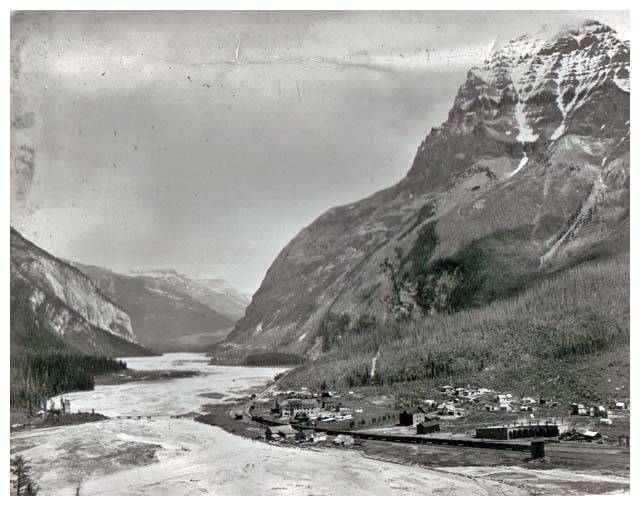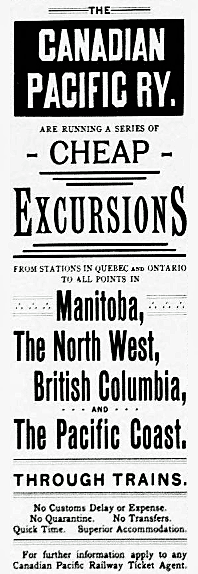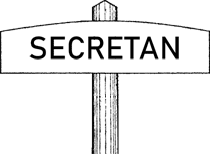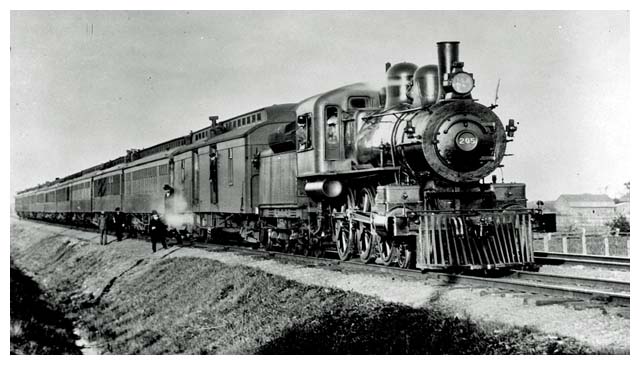
by Grade Reductions

A booklet produced by the Canadian Pacific Railway in 1906 titled "Proceedings of the Meeting of Western Lines Officials held at Field, British Columbia, contains a selection of articles and discussions about the railway's operation. This month's article from that booklet, "The Saving Effected by Grade Reductions", written by F.F. Busteed, Assistant Chief Engineer Western Lines Canadian Pacific Railway, is reprinted here for your education with the addition of some appropriate images.
In presenting this paper, "The Saving Effected by Grade Reductions" the general question is the one that will be dwelt upon instead of a particular proposition, though I will use the latter aspect of the case as an illustration of the possible saving under certain conditions.
The question of reducing grades over a certain section should be considered advantageous or economical when the saving effected in operating per annum over the section, due to grade reduction, more than represents the interest on the capital outlay necessary to make the reduction. In arriving at this conclusion, the cost of the work, the cost of operating, and the tons hauled, which represent the gross earnings, have to be considered.
Figuring on the traffic being the same before and after the revision, the most economical location to make is the one which will require the least outlay for construction, and which will reduce operating expenses by an amount more than sufficient to pay interest on this outlay.
The essentials entering into the details of location affecting operating expenses are the grades, distance, curvature, and rise and fall, which are given in their order of importance, and not to forget a point often mentioned, though it also affects the cost of construction, width of cuttings, and how they should be sloped, which is applicable in a country where blizzards rage and snow fences are of no account.
When making an estimate or calculation as to whether a grade reduction is justifiable, certain values are used for rise and fall, for curvature, and for distance in comparing the lines, and when this is done the gross tonnage is used, and the number of trains required to haul the same after the reduction is made, is figured out to finally decide the question.
As the starting resistance of a train on the level limits the weight of the train, a speed limit being given of ten miles an hour, no advantage is gained, except in a reduction of time, in reducing a grade below .4 of 1 percent.
 It has therefore, been the endeavor on our
lines to reduce the grades to a maximum of .4 of 1 percent virtual. This has been done except where it was deemed advisable to use "pusher grades",
where it would not now, or in the future with greatly increased traffic, pay to make the reduction, either on account of the exceptionally heavy work involved,
or on account of the greatly increased length of line, where the interest on the cost of construction, or for operating the increased distance, would much more
than pay for the pushers over that grade.
It has therefore, been the endeavor on our
lines to reduce the grades to a maximum of .4 of 1 percent virtual. This has been done except where it was deemed advisable to use "pusher grades",
where it would not now, or in the future with greatly increased traffic, pay to make the reduction, either on account of the exceptionally heavy work involved,
or on account of the greatly increased length of line, where the interest on the cost of construction, or for operating the increased distance, would much more
than pay for the pushers over that grade.
In locating pusher grades, the grade should be uniform and continuous, so that the pusher engine can be kept continuously at work. The rate of grade should be such as to require the full power of the pusher engine in addition to that of the regular engine to handle the maximum load over the balance of the section, as this will reduce the length of the pusher grade and consequently the pusher engine mileage.
The question of whether virtual or actual grades should he used, has been often discussed and the opinions of eminent engineers differ on the subject. On the one side it is claimed that the momentum of a train which can be obtained at the foot of a grade should be used to carry it to a certain height, or velocity head as it is called, due regard being given to the speed which is necessary to do this, and which is fixed at some safe limit. By the adoption of virtual grades much lighter work can be obtained and the cost of the grade reduction reduced to a minimum. On the other hand, actual grades are recommended by some because, it is argued, if a train stops upon a momentum grade it will not be able to start upon that grade, but for one train which would be called upon to stop on a momentum grade one hundred trains would go over without stopping. The objection too, which is put forward against "running for a grade" cannot be considered when a safe limit of speed is put upon the train at the foot of the grade. Bad weather conditions and poor conditions of power are put forward as reasons why momentum grades should be introduced, but these adverse conditions apply with greater force to long ruling grades than to the shorter steeper momentum grades, us adhesion and steaming power are taxed more, or taxed longer, on the former grade, if momentum grades are not the ruling grades under favorable conditions.
It must be understood that the estimate of saving through grade reduction may be entirely erroneous unless these momentum grades are actually operated as such, when virtual grades were used in the preparation of the estimate for the scheme of grade reduction.
While it scheme of grade reduction might be figured as a paying investment, using light engines, it might not pay to reduce the grades if heavier power were used, on account of the lesser number of trains necessary to move the tonnage over the section in question, and therefore in estimating on what saving can be made it is necessary to know the power which will be used.
As many items of operating expense will not be affected by grade reduction, the cost of operating an additional train per mile will not be as great as the average cost per train mile for entire traffic over that section, and knowing the average proportion that each item of operating expenses bears to the whole, the percentage of the proportion affected can be arrived at, and the percentage of cost per train mile for the additional train can he calculated. By multiplying this by twice the section mileage, and by 365, and this product by the number of round-trip daily trains saved, we get the amount, which capitalized would determine whether a proposed grade reduction over that section was profitable. To find the number of freight trains saved by a reduction of grade it is necessary to ascertain the total train load that can be hauled on different grades by a given engine. This can either be done by experiment or calculation.
The foregoing shows the method followed in estimating on the grade reduction between Moose Jaw and Swift Current. Knowing the length, curvature, and rise and fall on the old line, and the improvements made on the same by the change, it can be seen how these items of location affect the operating expenses, by giving the differences between these similar items their respective values.
The total angle on the old line was 1547 degrees 07 minutes, on the new line 997 degrees 33 minutes, a difference of 549 degrees 34 minutes in favor of the new line. The rise and fall on the old line was 2,246 feet and on the new line 1,424 feet, a difference of 822 feet in favor of the new line. The new line is two miles shorter than the old line and the new grade is 0.4 of 1 percent compensated for curvature against 1 percent uncompensated on the old line. A capital value was given to the above items of $6.00 per daily train per degree of angle saved, of 40 cents per foot per daily train for distance saved, and of $35.00 per foot per train for difference in rise and fall in the old and new lines. In figuring the savings on account of reducing the grade from 1 percent uncompensated to 0.4 of 1 percent compensated the volume of traffic was taken from statistics.
 In order to show that the reduction
was justifiable the following statement is given. To arrive at this it was necessary to take the improvement in operating between the years 1904 and 1905
shown on an adjoining section where the conditions are similar in order to form a comparison. The cost of hauling 1,000 equivalent gross tons one mile
eastbound over the Moose Jaw section in 1904, was 51.5 cents and in 1905, 40.75 cents, showing a saving due to better operating of 10.75 cents. The cost of
hauling 1,000 equivalent gross tons one mile eastbound over the Swift Current section in 1904 was 47.26 cents and in 1905, 28.37 cents, showing a saving of
18.89 cents due to operating and grade reduction. In 1904 the cost of hauling 1,000 equivalent gross tons one mile westbound over the Moose Jaw section was
68.27 cents and in 1905 50.43 cents, showing a saving of 17.84 cents due to better operating, and the cost of hauling 1,000 equivalent gross tons one mile
westbound over the Swift Current section in 1904 was 76.90 cents and in 1905 42.2 cents, showing a saving of 34.7 cents, due to operating and grade
reduction.
In order to show that the reduction
was justifiable the following statement is given. To arrive at this it was necessary to take the improvement in operating between the years 1904 and 1905
shown on an adjoining section where the conditions are similar in order to form a comparison. The cost of hauling 1,000 equivalent gross tons one mile
eastbound over the Moose Jaw section in 1904, was 51.5 cents and in 1905, 40.75 cents, showing a saving due to better operating of 10.75 cents. The cost of
hauling 1,000 equivalent gross tons one mile eastbound over the Swift Current section in 1904 was 47.26 cents and in 1905, 28.37 cents, showing a saving of
18.89 cents due to operating and grade reduction. In 1904 the cost of hauling 1,000 equivalent gross tons one mile westbound over the Moose Jaw section was
68.27 cents and in 1905 50.43 cents, showing a saving of 17.84 cents due to better operating, and the cost of hauling 1,000 equivalent gross tons one mile
westbound over the Swift Current section in 1904 was 76.90 cents and in 1905 42.2 cents, showing a saving of 34.7 cents, due to operating and grade
reduction.
These figures give a saving due to grade reduction of 8.14 cents for eastbound traffic and of 16.84 cents for westbound traffic for 1,000 equivalent gross tons hauled for one mile, and as there were 175,427,374 equivalent gross tons hauled east, and 131,708,608 equivalent gross tons hauled west in 1905, the saving amounts to $36,501.00, which capitalized 5 percent shows that we could have spent $730,020.00 on grade reduction. The estimate for grade reduction was $637,358.00. These figures show that the scheme has been a paying one, and as the traffic increases will become more and more so.
Mr. G. Erickson - I have given the question of grade reduction much consideration. In building the Crow's Nest the Government specified a maximum grade of one percent. Had we been permitted to have departed from this and made grades two percent in places we would have bunched them and by the use of pusher or assisting engines in one or two places, have hauled a much larger average train than we do. Over the two ruling grades between Crow's Nest and Macleod a 100 percent engine hauls 650 tons. By doubling these two grades, one of which is three miles and the other three and a half miles long, the same engine hauled 1,300 tons. I figure with these grades eliminated we would save seventy dollars per train, with our present traffic over seventy five thousand dollars per annum. It would cost about one hundred thousand dollars to eliminate these two grades. The same thing to a lesser extent applies between Macleod and Lethbridge, where I estimate it would cost seventy eight thousand dollars to reduce our grades so that we would save in operation fifty thousand dollars a year.
Chairman - Mr. Erickson, I would like to have your opinion respecting virtual and momentum grades.
Mr. G. Erickson - If curvature is slight or if line be a tangent at the bottom grades, I see nothing to object to in them. Unfortunately I have known momentum grades to be located with sharp curves at the bottom which resulted in derailing freight trains attempting to take these grades at high speed.
Mr. C.E. McPherson - It strikes me with the grade reduction and track inspection I have heard so much about as peculiar that the speed of passenger trains has not been accelerated. Our trains are no faster today than they were four or five years ago.
Mr. A. Price - Mr. McPherson, I take it, refers to the transcontinental trains only. It must be conceded by all that faster schedules are in force on branch lines than were in effect three years ago. A fast passenger schedule does not necessarily follow grade revision.
I think that figures based on the formula given by Mr. Busteed will show that the grades referred to by Mr. Erickson should be reduced. We are making an improvement month by month in the cost of transportation, but this improvement cannot be continued indefinitely unless the work of reducing grades be prosecuted. This year the Medicine Hat Section is to be reduced to a 4/10 grade which will enable its to run trains through between Medicine Hat and Moose Jaw without being broken up at Swift Current as now. A great increase in the traffic along the Crows Nest seems assured and in order to avoid congestion the grades should be revised in the near future.
Mr. G.J. Bury - Our transcontinental trains, to which I take it, you refer, are larger and scheduled at higher speed. In fact, our transcontinental trains are the heaviest on the continent. The motive in reducing grades is not so much as to enable high passenger train speed, but rather to reduce the cost of operating freight trains. Passenger engines loaded so as to make speed required with reserve power, strange as it may seem, make better time on a rolling line than on a low grade one.
Mr. J. Brownlee - When we revised the grades on the Swift Current section we substituted a four tenths for a one percent grade on which
the line was originally constructed. On the Swift Current section, westbound, we have 25 miles of four tenths grade. The water on that section is very light
and the valves become dry on the engine, and remarkable as it may seem, we could make very much better time with passenger trains on account of the prevailing
grades, than we can on the present grade, although we are hauling 85 percent more tonnage on freight trains, and they could haul more if it were not for the
water conditions above mentioned. We have increased the size of our passenger trains at least 25 percent over four years ago, the time to which Mr. McPherson
refers.
 This one percent
grade was the original Swift Current Subdivision grade laid out by company surveyor J.H.E. Secretan circa 1882.
This one percent
grade was the original Swift Current Subdivision grade laid out by company surveyor J.H.E. Secretan circa 1882.
Mr. C.E. McPherson - But our larger engines are supposed to have greater capacity than those of four years ago.
Mr. G. Erickson - I maintain that a passenger engine on a rolling grade makes equally as good time with 80 percent of the engine capacity
as on a four tenths grade. With freight trains it is different, as we load to the engine capacity, economical transportation rather than high speed being the
sine qua non (essential condition).

Canadian Pacific Historical Association
